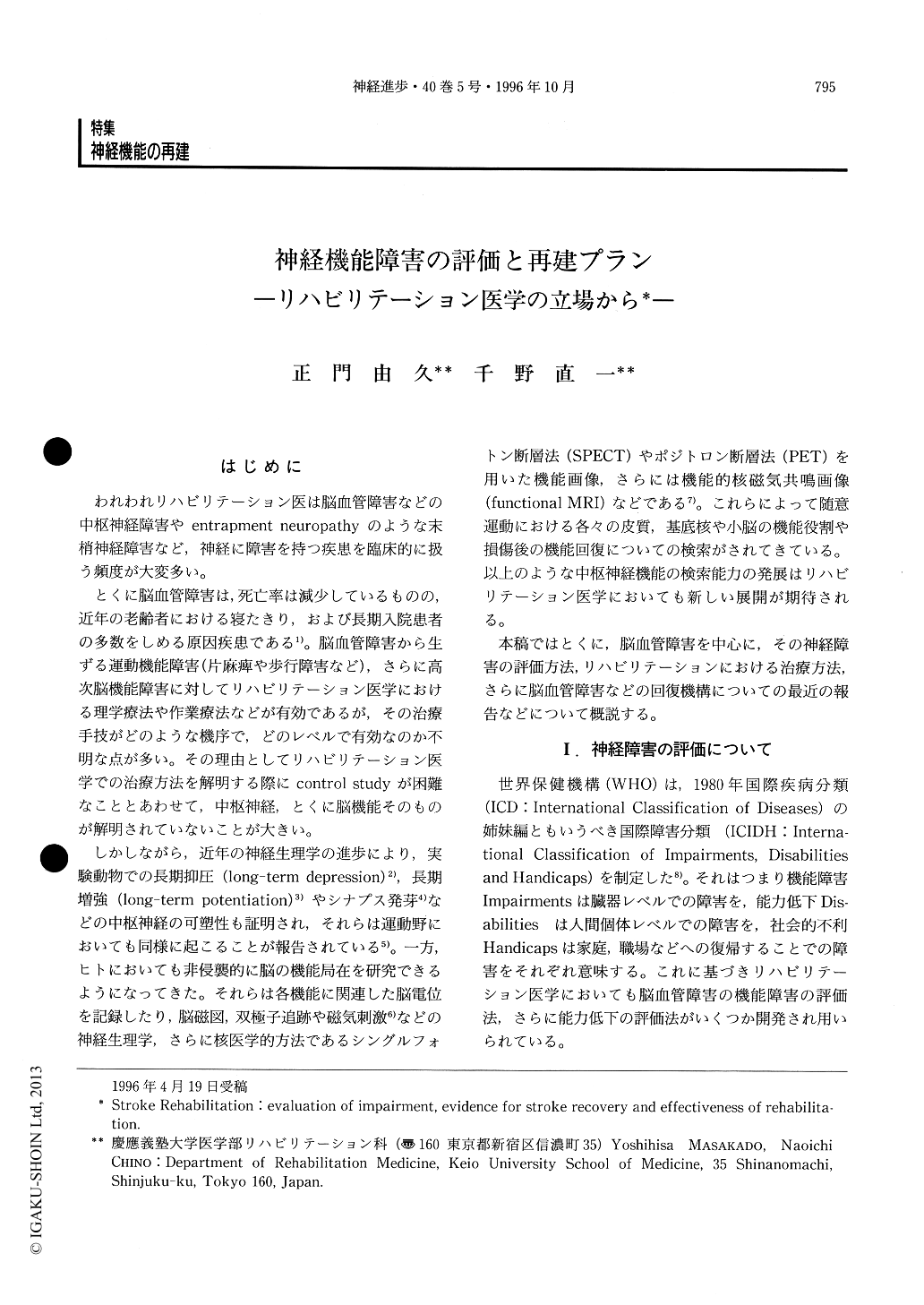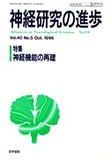Japanese
English
- 有料閲覧
- Abstract 文献概要
- 1ページ目 Look Inside
はじめに
われわれリハビリテーション医は脳血管障害などの中枢神経障害やentrapment neuropathyのような末梢神経障害など,神経に障害を持つ疾患を臨床的に扱う頻度が大変多い。
とくに脳血管障害は,死亡率は減少しているものの,近年の老齢者における寝たきり,および長期入院患者の多数をしめる原因疾患である1)。脳血管障害から生ずる運動機能障害(片麻痺や歩行障害など),さらに高次脳機能障害に対してリハビリテーション医学における理学療法や作業療法などが有効であるが,その治療手技がどのような機序で,どのレベルで有効なのか不明な点が多い。その理由としてリハビリテーション医学での治療方法を解明する際にcontrol studyが困難なこととあわせて,中枢神経,とくに脳機能そのものが解明されていないことが大きい。
Survivors of stroke continue to increase in number. This is particular so in Japan, and a recent survey by the Ministry of Health and Welfare indicated that about 43% of patients aged 65 years or older who were institutionalized for at least six months and suffered a stroke. To carry out effective rehabilitation of stroke patients, we initially need to make an accurate evaluation of the level of impairment.

Copyright © 1996, Igaku-Shoin Ltd. All rights reserved.


